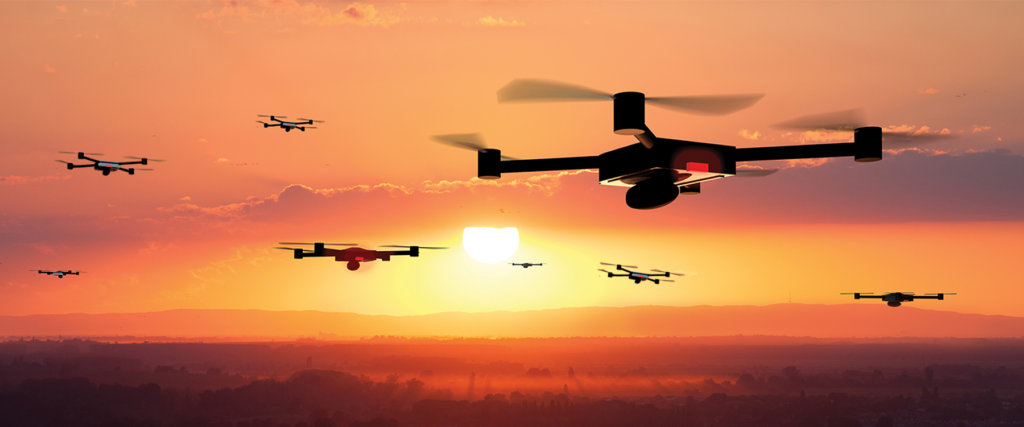
INTRODUCTION:
Bio-drone swarms refer to a futuristic class of drones that either mimic biological organisms (bio-inspired drones) or integrate biological components (such as living cells, insects, or bacteria) with robotic systems. These drones operate in coordinated groups, just like natural swarms of birds, insects, or fish, to execute complex tasks with high adaptability and efficiency. They are designed for applications in military, surveillance, search & rescue, environmental monitoring, and medical fields.
Types of Bio-Drone Swarms:
1. Bio-Inspired Drone Swarms
These are entirely robotic but designed to mimic the behavior and flight dynamics of living creatures.
- Examples:
- Bat-Inspired Drones – Use flapping wings for silent flight (e.g., Bat Bot).
- Bird-Like Drones – Imitate the flight of birds for camouflage and efficient gliding.
- Insect-Inspired Micro-Drones – Mimic bees or dragonflies for reconnaissance and pollination.
2. Biohybrid Drone Swarms
These drones integrate biological components with robotics.
- Examples:
- Cyborg Insects – Real insects (like cockroaches or beetles) fitted with microchips and sensors for surveillance.
- Bioluminescent Drones – Use glowing bacteria or firefly-inspired lighting for night operations.
- Living Material Drones – Built using organic materials that self-repair or biodegrade after use.
3. Fully Biological Swarms
This theoretical category consists of genetically engineered organisms (such as bacteria or fungi) designed to act as drones for bio-sensing, environmental repair, or attack (bio-warfare).
Working Principle:
Bio-drone swarms operate using principles inspired by nature:
- Swarm Intelligence (AI-based Coordination): Uses decentralized AI to enable drones to communicate and adapt like insect swarms.
- Neural Interfaces: Biohybrid drones may use brain-machine interfaces to control living organisms via electronic impulses.
- Energy Harvesting: Some bio-drones may generate power from organic sources, such as photosynthesis or kinetic movement.
- Autonomous Navigation: Equipped with sensors, LiDAR, and machine learning to detect obstacles, identify targets, and self-organize.
Applications:
1.Military & Defense
- Reconnaissance and surveillance in enemy territory.
- Kamikaze drone swarms for precision strikes.
- Battlefield communication relays.
2. Search & Rescue
- Detecting survivors in disaster zones using thermal imaging.
- Delivering medical supplies in hard-to-reach areas.
3. Environmental & Agricultural Use
- Monitoring air and water quality with bio-sensing swarms.
- Pollination of crops using insect-like drones.
4. Medical & Biotech 🏥
- Drug delivery using microscopic biohybrid drones.
- Micro-drones for non-invasive surgeries.
Advantages:
- Highly Adaptable – Can operate in diverse environments, from dense forests to urban areas.
- Self-Healing & Biodegradable – Some bio-drones could self-repair or decompose naturally.
- Silent & Camouflaged – Bio-inspired designs reduce noise and make them harder to detect.
- Autonomous & Scalable – Swarm intelligence enables large-scale operations with minimal human intervention.
Disadvantages:
- Ethical Concerns – Use of cyborg insects or genetically modified organisms raises ethical questions.
- Potential Weaponization – Could be misused for bioterrorism or lethal autonomous attacks.
- High Complexity & Cost – Advanced AI and bio-integration require significant research and funding.
- Limited Control – Biohybrid systems may be unpredictable compared to fully robotic counterparts.
Conclusion:
Bio-drone swarms represent a groundbreaking convergence of biology, AI, and robotics. They have the potential to revolutionize industries from defense to medicine and environmental science. However, challenges related to ethics, control, and security must be addressed before widespread deployment.
